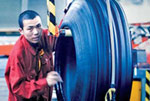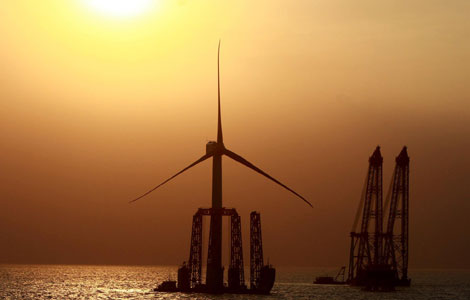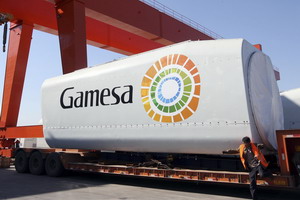Chinese power plant contractors take half of Indian market share
Updated: 2011-09-08 10:31
(Xinhua)
|
|||||||||||
MUMBAI— China's power plant builders have played a major role in lifting Indian power generation and hastening its transformation of infrastructure in the past years, showed statistics.
SEPCO III, the largest Chinese contractor of power plant in India on engineering, procurement and construction (EPC), has been awarded $9 billion worth of contracts since 2005 with total power generation capacity of 9.57 GW, said Lu Yanxia, director of SEPCO III's Mumbai Office on Tuesday.
SEPCO III alone takes more than 20 percent of Indian power plant building market, though all Chinese power plant contractors occupy less than 50 percent of market share in the third largest Asian economy, Lu said.
Partnering with Adani Power, Vedanda Resources and Hong Kong- based CLP Group, SEPCO III now has five projects under construction and has finished one with 23 power generating units.
Peng Gang, economic and commercial counselor of the Chinese embassy in New Delhi, told Xinhua onSept 7 that Chinese power plant builders and power generation equipment suppliers have made positive and effective contribution in recent years to the growth of Indian power generation capacity and the improvement of infrastructure at large.
Chinese players also increased local employment and enhanced capacity building in this regard, said Peng.
India needs to adopt a more aggressive path to generate additional power, said C Rangarajan, chairman of the Economic Advisory Council to the prime minister.
Rangarajan said shortage of physical infrastructure, especially electricity, would be a main bottleneck for the country's economy to grow at 9 percent.
Now, around 56 percent of Indian rural households have no access to electricity and the country faces 12 percent to 14 percent of power shortage in peak hours.
Though Indian central government planned to add 78 GW of power generation capacity during 2006-2011, only around 50 GW could be realized.
On the other hand, Chinese power plant builders intend to implement the projects in a faster way, and are willing to employ and train local workers.
Still, the implementation will take 12 percent to 15 percent more time in India due to low productivity of local workers, bad weather as well as difficulties to obtain visa for Chinese workers and engineers, according to Lu.
India now faces challenges from weak infrastructure like power and road, high inflation and lack of qualified and skillful labor force, said Dharmakirti Joshi, chief economist with Indian credit rating and research body CRISIL Limited.
SEPCO III now employs around 7,000 Indian workers directly with more than 50,000 local people engaged with its subcontractors.
SEPCO III has trained many welders for high-grade alloy steel and other skilled workers in India, said Lu.
Lu added that the power plant builder would go ahead with localization by recruiting a large number of local people, with Indian employees having accounted for 50 percent of the management personnel.
Furthermore, SEPCO III announced to donate 3 million rupees ( around $65,000) to two Mumbai-based NGOs to help build a children's hospital and improve the sanitation of the slum area in Mumbai.
Unfortunately, the Indian government has applied stringent conditions for Chinese contractors to employ foreign staff since 2009, which hampers the smooth operation of Chinese companies.
If Chinese skilled workers and engineers were not pinned at specific project under project visa, and were transferred directly to another project after completion of existing one, it would be a great relief to us, Lu added.
Despite of those disadvantages, Chinese power transmission and transformation companies like State Grid Corporation of China and Tebian Electric Apparatus Stock Co Ltd have entered India recently eyeing the great potential here.













